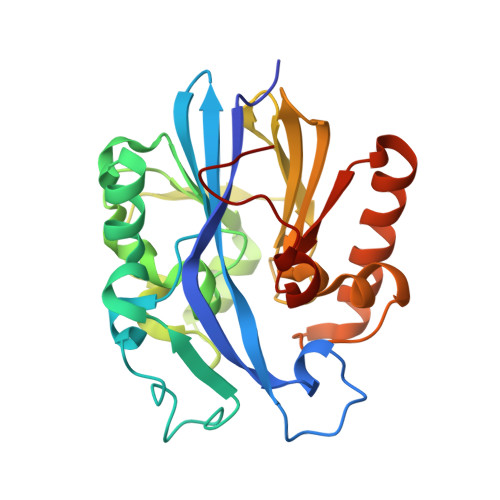Mechanism of the quorum-quenching lactonase (AiiA) from Bacillus thuringiensis. 1. Product-bound structures.
Liu, D., Momb, J., Thomas, P.W., Moulin, A., Petsko, G.A., Fast, W., Ringe, D.(2008) Biochemistry 47: 7706-7714
- PubMed: 18627129
- DOI: https://doi.org/10.1021/bi800368y
- Primary Citation of Related Structures:
3DHA, 3DHB, 3DHC - PubMed Abstract:
Enzymes capable of hydrolyzing N-acyl- l-homoserine lactones (AHLs) used in some bacterial quorum-sensing pathways are of considerable interest for their ability to block undesirable phenotypes. Most known AHL hydrolases that catalyze ring opening (AHL lactonases) are members of the metallo-beta-lactamase enzyme superfamily and rely on a dinuclear zinc site for catalysis and stability. Here we report the three-dimensional structures of three product complexes formed with the AHL lactonase from Bacillus thuringiensis. Structures of the lactonase bound with two different concentrations of the ring-opened product of N-hexanoyl- l-homoserine lactone are determined at 0.95 and 1.4 A resolution and exhibit different product configurations. A structure of the ring-opened product of the non-natural N-hexanoyl- l-homocysteine thiolactone at 1.3 A resolution is also determined. On the basis of these product-bound structures, a substrate-binding model is presented that differs from previous proposals. Additionally, the proximity of the product to active-site residues and observed changes in protein conformation and metal coordination provide insight into the catalytic mechanism of this quorum-quenching metalloenzyme.
- Department of Chemistry, Brandeis University, Waltham, Massachusetts 02454-9110, USA.
Organizational Affiliation:



















